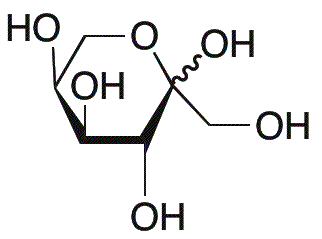L-(+)-Fructose is widely utilized in research focused on:
- Food Industry: Commonly used as a natural sweetener in various food products, fructose enhances flavor while providing fewer calories than sucrose, making it ideal for low-calorie and diabetic-friendly options.
- Pharmaceuticals: Employed in drug formulations, it can improve the solubility and stability of certain medications, ensuring better absorption and efficacy in treatments.
- Biotechnology: Acts as a carbon source in microbial fermentation processes, supporting the growth of beneficial microorganisms used in the production of enzymes and biofuels.
- Cosmetics: Incorporated in skincare products for its moisturizing properties, fructose helps retain moisture in the skin, promoting a healthy appearance.
- Nutritional Supplements: Used in energy drinks and supplements, it provides a quick source of energy, making it popular among athletes and active individuals.
General Information
Properties
Safety and Regulations
Applications
L-(+)-Fructose is widely utilized in research focused on:
- Food Industry: Commonly used as a natural sweetener in various food products, fructose enhances flavor while providing fewer calories than sucrose, making it ideal for low-calorie and diabetic-friendly options.
- Pharmaceuticals: Employed in drug formulations, it can improve the solubility and stability of certain medications, ensuring better absorption and efficacy in treatments.
- Biotechnology: Acts as a carbon source in microbial fermentation processes, supporting the growth of beneficial microorganisms used in the production of enzymes and biofuels.
- Cosmetics: Incorporated in skincare products for its moisturizing properties, fructose helps retain moisture in the skin, promoting a healthy appearance.
- Nutritional Supplements: Used in energy drinks and supplements, it provides a quick source of energy, making it popular among athletes and active individuals.
Documents
Safety Data Sheets (SDS)
The SDS provides comprehensive safety information on handling, storage, and disposal of the product.
Product Specification (PS)
The PS provides a comprehensive breakdown of the product’s properties, including chemical composition, physical state, purity, and storage requirements. It also details acceptable quality ranges and the product's intended applications.
Certificates of Analysis (COA)
Search for Certificates of Analysis (COA) by entering the products Lot Number. Lot and Batch Numbers can be found on a product’s label following the words ‘Lot’ or ‘Batch’.
Numéro de catalogue
Numéro de lot/série
Certificates Of Origin (COO)
This COO confirms the country where the product was manufactured, and also details the materials and components used in it and whether it is derived from natural, synthetic, or other specific sources. This certificate may be required for customs, trade, and regulatory compliance.
Numéro de catalogue
Numéro de lot/série
Safety Data Sheets (SDS)
The SDS provides comprehensive safety information on handling, storage, and disposal of the product.
DownloadProduct Specification (PS)
The PS provides a comprehensive breakdown of the product’s properties, including chemical composition, physical state, purity, and storage requirements. It also details acceptable quality ranges and the product's intended applications.
DownloadCertificates of Analysis (COA)
Search for Certificates of Analysis (COA) by entering the products Lot Number. Lot and Batch Numbers can be found on a product’s label following the words ‘Lot’ or ‘Batch’.
Numéro de catalogue
Numéro de lot/série
Certificates Of Origin (COO)
This COO confirms the country where the product was manufactured, and also details the materials and components used in it and whether it is derived from natural, synthetic, or other specific sources. This certificate may be required for customs, trade, and regulatory compliance.


